|
I should have titled this post “Mysteries unlocked”. I am so excited about the discoveries I am about to share with you. I am as excited about them as others are about discovering new planets!
Plants provide important and fascinating essential services under ground which in recent years are being examined more in detail by scientists and are changing horticultural practices. Contrary to what many people think, most plants do not deplete soil nutrients, they add fertility to the soil and create better conditions for plant growth for the entire plant community. How does this work? Let’s explore the various services plants provide underground. Underground plants have many roots. In fact, the root mass can often be many times larger than the canopy above ground. Root systems develop prior to above ground growth and make the growth possible. Roots of different plants inhabit different niches in the soil, allowing bacteria and fungi to thrive at various depths of soil. This improves soil porosity and structure, as well as mineral uptake. Roots exude and release organic acids and other compounds to the soil close around them. Through the process of photosynthesis plants produce complex sugars. It has been estimated that 12-40% of the total amount of carbohydrates produced by photosynthesis is released into the soil surrounding roots. Roots also secrete hormones and vitamins. Thus, the soil surrounding roots is richer than all other soil in the garden and is called “rhizosphere”. It deserves a special name like that because it is an environment that is home to populations of beneficial soil organisms and especially to very important bacteria whose presence is vital to soil fertility. These bacteria feed on the sugary exudates. Roots create a dynamic environment where microbes can develop and interact. Knowing about the processes happening in the rhizosphere is important to understanding the power of your garden. Microorganisms in the rhizosphere do so much work! They decompose organic matter such as compost, fallen leaves and plant debris to release its minerals into the soil. They increase the supply of nutrients in the soil and make them available for plant uptake. Many plants of the legume family have an association with bacteria called Rhizobia bacteria. The rhizobia bacteria feed on the sugars exuded by the legume roots. They convert atmospheric nitrogen and store it in small nodules along the roots. When those roots are shed in the ground, or in other words die, the nitrogen becomes fixed in the soil in the way that plants using that soil can uptake it. Many gardeners that practice permaculture love planting herbaceous, woody and vining plants of the legume family, both perennial and annual, among their crop plants. So far, in my small-scale forest garden I have seen a great effect of these legume plants and I also enjoy seeing the many bees that are attracted to their long season blooms. The nitrogen fixers I have grown so far are: White clover, lupine, showy tick trefoil, beans, peas, wisteria (which I chop and drop but is still popping up), and the non legume but still nitrogen fixing sea-buckthorn. The sea-buckthorn does not provide the charming and showy flowers of the legume family and is only wind pollinated, but its roots are extremely far reaching and are known to efficiently remediate soil and add fertility to neighbouring trees. They also provide humans with superior medicinal berries. In fact, all parts of this plant can be used to promote human and animal health. They are acclimatized to cold growing zones and should be explored for their healing and disease preventative properties. Due to its thorns it can be used as wild animal barriers around gardens, as wind breakers and as slope stabilisers. If you have experience with other nitrogen fixers and can recommend them to me, I would love to get your suggestions in the comments section below this post. For the large tree members of the legume family there is unfortunately no space in my garden (believe me, I tried to figure a way to fit them in, but I’d need to purchase my neighbour’s property) nevertheless, the pea shrub (Caragana arborescens “Pendula”) is on my wish list as well as the shrubs New Jersey Tea and Sweet Gayle which are native to North America. Other than increasing availability of nutrients to plants, microbes also produce hormones that stimulate plant growth. Some bacteria even produce antibiotic and anti fungal metabolites that prevent the growth and activity of pathogens. Their secretions control disease and prevent it from affecting roots. Some bacteria produce enzymes that induce plant defence systems to respond in ways that shield the roots from being infected by disease. Some bacteria produce growth regulators that cause crops to grow greater amounts of fine roots. With the increase of fine roots, the absorptive surface of plant roots is increased which increases their ability to take up water and nutrients. One other job that bacteria are good at, and I am happy to list here, is that their sticky secretions group fine soil particles into larger aggregates. This is very important to creating a healthy soil structure that supports plant growth. The larger aggregates allow for better drainage and increased oxygen in the soil. This is most important to disease prevention and to making a soil environment favourable to our microbial friends. Yes, I am happy and excited about healthy soil because it is a key factor and the basis for Eden living, for freedom, peace and abundance. Continue following my blog as I gently explore Eden living, unity and the brotherhood of living things. Back to our list of services, some plants have long tap roots that penetrate hard-pan levels of soil. They break up soil compaction and mine minerals from depths of soil that other plant roots do not reach. They bring those minerals up into their leaves which either shed in due season or can be chopped and dropped on the soil surface. These are called “nutrient accumulators”. In my garden they include dandelion, comfrey, queen Ann’s lace, parsley, parsnip, and mullein. Others that you can try are horseradish, dill, and baptisia. If you can think of any other long tap rooted perennials or annuals, I’d love for you to suggest them in the comments of this post. So, what jobs do roots do? They create – rhizosphere for microbiology. They tunnel through the soil adding live and dead roots that allow water to move through the soil below ground. They promote water infiltration which prevents water and soil runoff. The most precious asset – water precipitation that falls on the garden should be captured, stored and used in the garden. Roots can do it! Just like plants shed leaves above ground they also shed roots below ground level. All this litter increases organic matter which improves water and nutrient storage. The list I provided here touches briefly on many aspects which deserve to be looked into in more depth. For those of you who are interested, here are some leads for farther research. One book that was recommended to me lately and I pass on the recommendation to you is called “The Hidden Life of Trees” by Peter Wohlleben. It is on the way to my mailbox as we speak. The book “Carrots Love Tomatoes” by Louise Riotte was also highly recommended to me. Don’t forget to write your recommendations in the comments section. Wishing a creative gardening year to my readers and many cool and neat observations, Sharona
0 Comments
Soon after I started gardening, I discovered companion planting and was very drawn to it. Why?
I grew to like the idea that I do not need to control everything or anything. I would like to see plants fend for themselves and thrive in their own “ecosystems” without having to lean on me as a crutch. True friendship seems more desirable than co-dependency in any relationship – as with us humans, so it should be in the garden. I would rather spend my time admiring my plants than having to worry about their daily needs. Having a garden can be like owning a grand piano. If you don’t know how to use it and produce fine tunes then it is a waste of a piano. If we have a garden then why not learn how nature can take care of it efficiently? Even if you don’t currently have a garden, you would do well to learn this, because one day you probably will. Until then, patio gardens can be surprisingly delightful and can help you develop great gardening skills. They are a great way to start practicing permaculture methods. Many plants, including weeds that “volunteer”, and other plants that we can easily add to our gardens can provide various important services to our soil and to other plants near by. When I heard about this, I didn’t know which plants provide which services, so I opened my ears and eyes and learned from many others. I am always experimenting with various plants and am still excited to learn about more. It is good to know that when planted together, some plants become good neighbours, improving the growing environment to benefit their community. So, let’s check closely to see some examples of the services plants offer each other. We will dig in and find out plant services and their contributions to the garden. The list is long so I divided it into two separate posts. So now we can put our tools to the side, because our plants will be doing our garden work for us. Plants give services both above ground and under ground level. We will start by exploring the above ground services. Above ground, some plants emit a scent that repels pests, these are called “pest confusers”. Some plants draw pests onto themselves and away from crops and are called “Trap crops”. Some plants draw beneficial insects that are either predators or parasitic to attack pests. Their presence in the garden is valuable in keeping pest populations down at a level that does not cause substantial damage. Some plants attract pollinators to the garden that help our crop plants produce many fruits. Plants can wage natural chemical warfare on insects. Insects use scent to help them locate food. Therefore, strong scented plants and herbs such as those in the onion and mint families may be intermingled with crops that confuse and repel pests. Some plants serve as ground-covers that keep moisture in the soil and prevent weeds from growing in it. Examples for this can be strawberry, white clover, comfrey, wild ginger, and catnip. Other plants that are not considered ground covers can achieve the same result if planted close enough. Plants grown together create a micro climate that is higher in humidity and therefore warmer. They serve as wind breakers and provide each other with shade that reduces sun scald. Because their roots hold moisture and improve the soil moisture holding capacity, they are much less affected by drought. Plants nurse their young seedlings. In fact, studies showed that young seedlings had much better chances of survival when growing under mature plants than when out on their own. A strategy of high crop diversity is proven to reduce insect pests and plant diseases. For example, beneficial wasps and flies are attracted to flat-topped flower clusters of plants such as dill, parsley, carrot, coriander and parsnip. Many gardeners in my town were desperately fighting Japanese beetles this summer. I had seen only one Japanese beetle in my food forest all summer. Garlic chives, garlic crops and many aromatic herbs of the mint family such as catmint, bee balm, thyme, oregano, basil and mint (mint planted in pots to keep them from spreading) are planted all around my gardens, as well as sweet alyssum and tansy which provide the same service. One of my favourite companions is growing petunias with peppers. They always impress me with their looks, health, vigor and productivity when planted in the same pot or bed. I was not sure why this was, but according to companion planting guides petunias repel many pests. They rid the garden of aphids, cabbage and tomato worms, beetles, and leafhoppers. They are most useful in vegetable gardens where beans, corn, peppers, broccoli or cabbage is grown. Petunias are easy to start from seeds in early spring so many of them can be grown without any great expense. Aside for their chemical scent, when planted close together in groups, plants emit vapour from leaves increasing the humidity and cooler temperatures around the plant community. Plant a greater diversity, plant in groups, called in permaculture terms “plant guilds”, and plant them in the same planting hole or very close and you will achieve higher flower density, more beneficial insects, reduced populations of harmful pests and no need for you to wage war against them. Your fruit will grow in abundance and you will have all the nutrition, tastes and aromas that you need, and more. Friendship, unity, protection and care are principles of nature. When you allow them to rule in your garden, you will enter a new dawn in gardening. I am a firm believer that everything we do should be based on noble values. When all of our deeds are tied to values, we build something stable, something that lasts and flourishes. It is said that every action starts with a thought and that we should keep our thoughts sweet and pure. “whatever is true, whatever is noble, whatever is right, whatever is pure, whatever is lovely, whatever is admirable--if anything is excellent or praiseworthy--think about such things.” This is, By the way, why I like to think about gardens.
In this blog-post I will touch on an essential value and principle that marks my chosen life path and, in a minute, you will see how this value relates so strongly to – how not – soil. Why do I find soil fascinating? Because soil is lowly and humble. Despite its meek stature It is the factory that builds all living molecules. Paradoxically, soil builds all the wonders of nature and design, including humans. Super-power nations invest so much in outer space research with the goal of gaining leading power and prestige. They look up to the heavens seeking to raise themselves above other nations not realizing that right under their feet they are losing the battle, as did great civilizations of the past that collapsed due to depletion of their soil, deforestation causing soil erosion and other ecological disruptions. Crop failure, decreases in yields and crops dull in nutritional value weakened and retarded the progressing Greeks. When their soil was fertile, they reached the heights of Olympic achievements, peace, philosophy and democracy. By not knowing how to honour their soil and value their ecosystems their crops became nutritionally dull, leading them to wars, rebellions and discord which led in turn to the rise of the Roman Empire and to much farther depletion in values. Another example is the Maya civilization. Around 800AD, their rapid deforestation and increase in population caused drought and heightened temperatures. These led to susceptibility to diseases, high mortality rates and wars that resulted in the collapse of their advanced culture. If we want to truly progress, we can look at horticultural practices of indigenous cultures. Not farming for greed and power they were and perhaps are able to create agricultural systems that resemble gardens rather than mass production fields. We should be able to develop our own community gardens to feed ourselves. With a goal of building systems that improve over time. In our day, we as designers look down beneath our feet with the reverence of star-filled skies above us and humbly work to give strength to mother earth and to all her children. We do this to build each other up. For clean air, clean food, clean water and great natural systems for the future generations. Let us explore these new possibilities provided by nature for the benefit of all. Wouldn’t you like to know that you have unseen helpers? Wouldn’t you like to wake up to see that what you thought is working against you is actually working for you in ways you couldn’t imagine? Well, I do believe this is true to humans, Nevertheless, in this post I will show you that this is true for plants. Therefore, I will dedicate this blog post to the underworld. The areas you don’t want to think about.
In a perfect world, all living things contribute to each other’s existence. Living things thrive because they are together, although they are different. They form communities that work together for the benefit of all. This is true for us, and it is so in the garden. Those things that are in the dark, damp, seemingly undesirable places of our world are also beneficial and contributing to us. The leaves of a tree become healthy, vibrant green because of those dark places underground and the shadowy, slimy creatures that live within it. Just like humans and animals need bacteria in their gut in order to process their food properly so as not to become sick, so do plants. They need the micro and macro organisms in the soil to process the organic matter, namely, eat and discharge, grow, die and disintegrate in the soil and thus turn the organic matter into available nutrients that can be easily used by the plants in our gardens. No micro organisms, no bacteria, no fungi, no nematodes and no single-celled protozoa mean no food for plants and no protection to root systems from harmful infestations. Healthy populations of bacteria and microorganisms loosen the soil and creates air pockets for water and roots to move throughout. Their sticky secretions bind tiny soil particles into large aggregates thus increasing soil porosity, meaning the spaces in between soil particles. In order to make these little animals work you must allow them the environment that is most beneficial to them: a dark, damp but not soaked, natural environment, clean of chemicals and filled with living and dying roots for them to feed on and colonize around. These crucial living things in the underground transport nutrients to the roots from areas way beyond their reach. Fungi are especially great at doing this. The underground filaments of mushrooms, called mycelium started receiving the attention of scientists in 1998. From then on, through genetic testing, discoveries were made of the ginormous sizes of fungi. Tests that were done at the University of Toronto and US Forestry Service as well as at Washington State Department of Natural Resources, revealed that individual mushrooms can cover hundreds and even thousands of acres underground! In fact, they are by far the largest living individuals on earth. They connect many tree and herbaceous plant root systems together and they transport chemical messages that awaken the plants immunity, when needed, to diseases and insects as well as enlarge their nutrition and water resources exponentially. To keep the environment cool and damp it must be covered. Uncovered soil bakes in the sun, is dried by the wind. It becomes hard as rock, holds no nutrients, no oxygen and no moisture. Roots in that environment cannot function, leading to failure of the entire plant. Weeds on the other hand can survive. They will develop many seeds, fast. They may be pioneer species that are trying to remediate the soil. So, what can you do?
Be gracious to your soil and cover it with a fluffy layer of diverse organic stuff and it will take care of the plants for you in ways that you cannot. We live in a time where we see how devastating our impact on nature can be. Now is the time to give attention to nature, to how nature works. How soil and all that is in it interact and how this affects human wellbeing and health. Let us explore this together and bring the best of nature home. Yours, Sharona |
Sharona GorenAvid gardener. Experimenter. Striver. Nature lover. Seeker. Archives
December 2022
Categories |
Site powered by Weebly. Managed by Netfirms

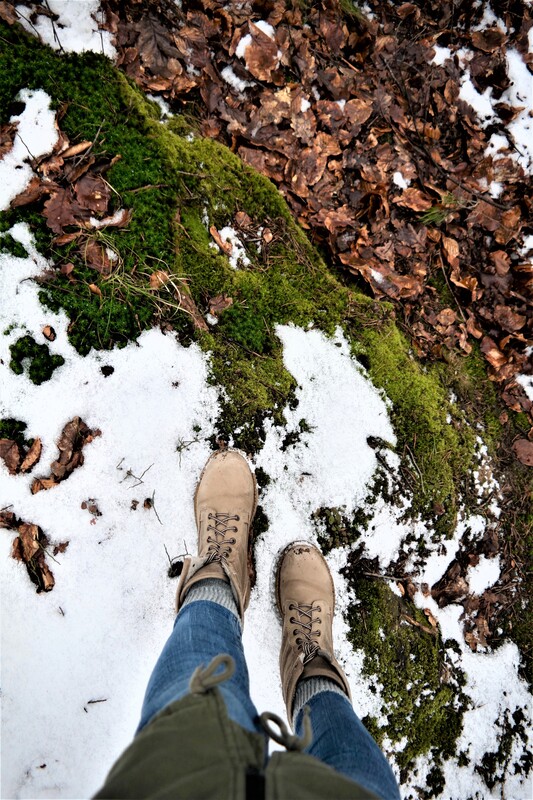
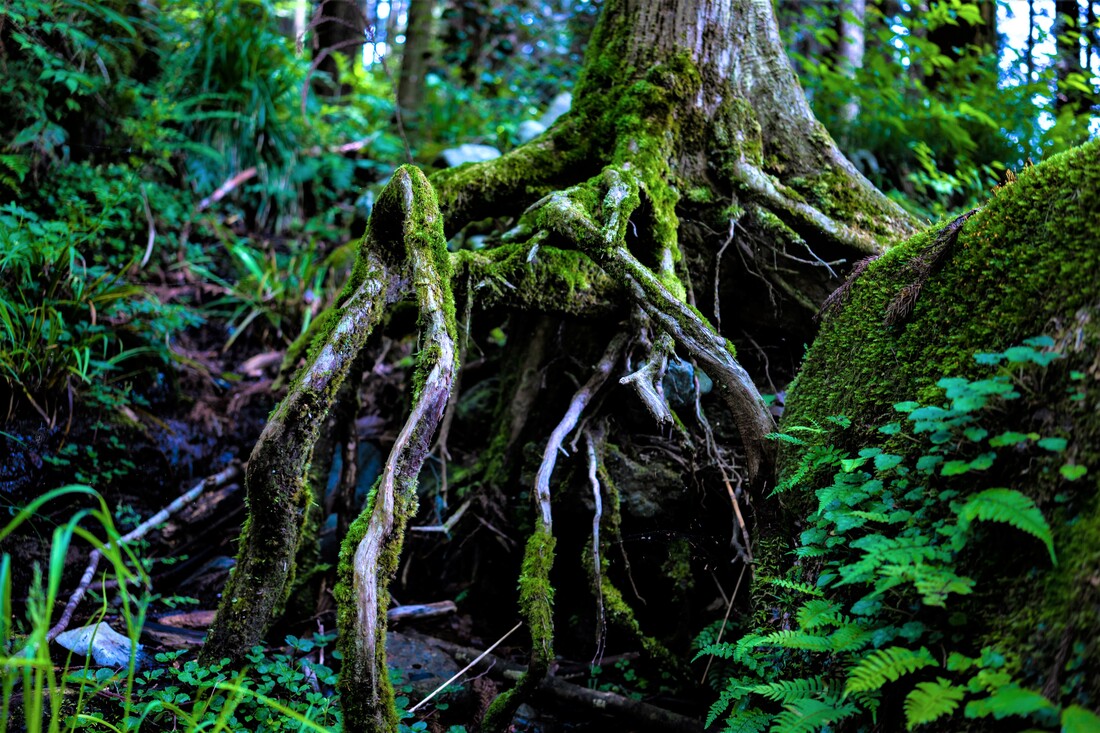

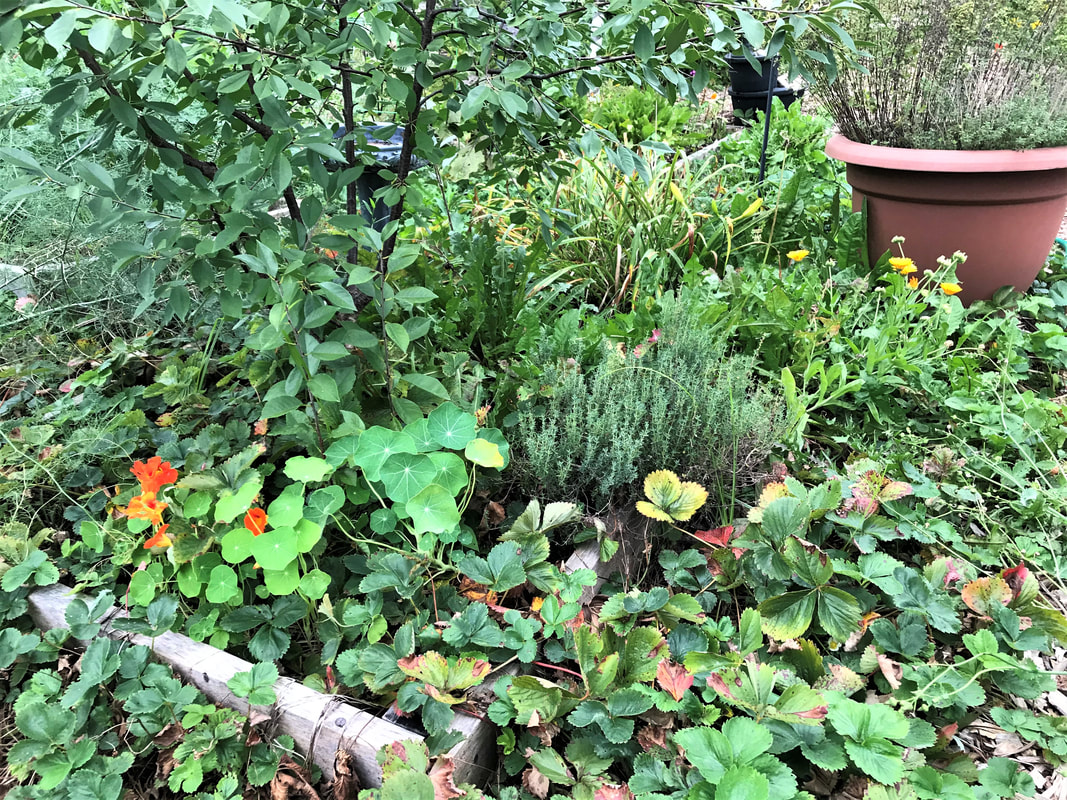
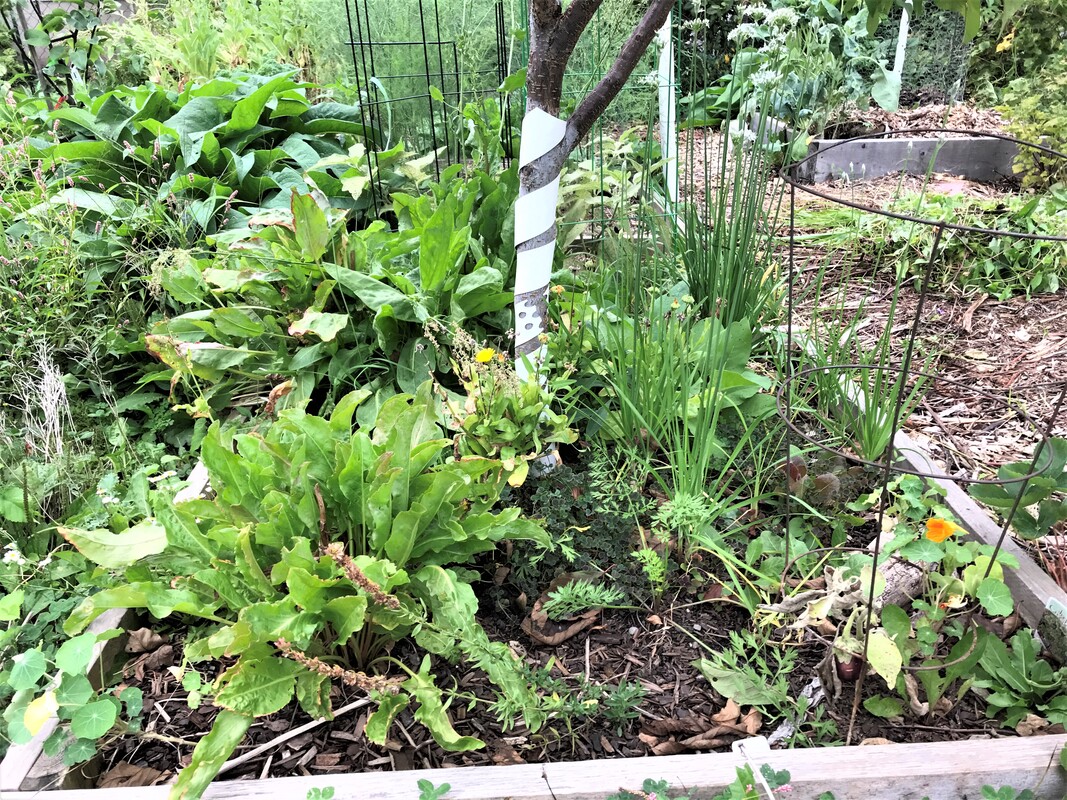


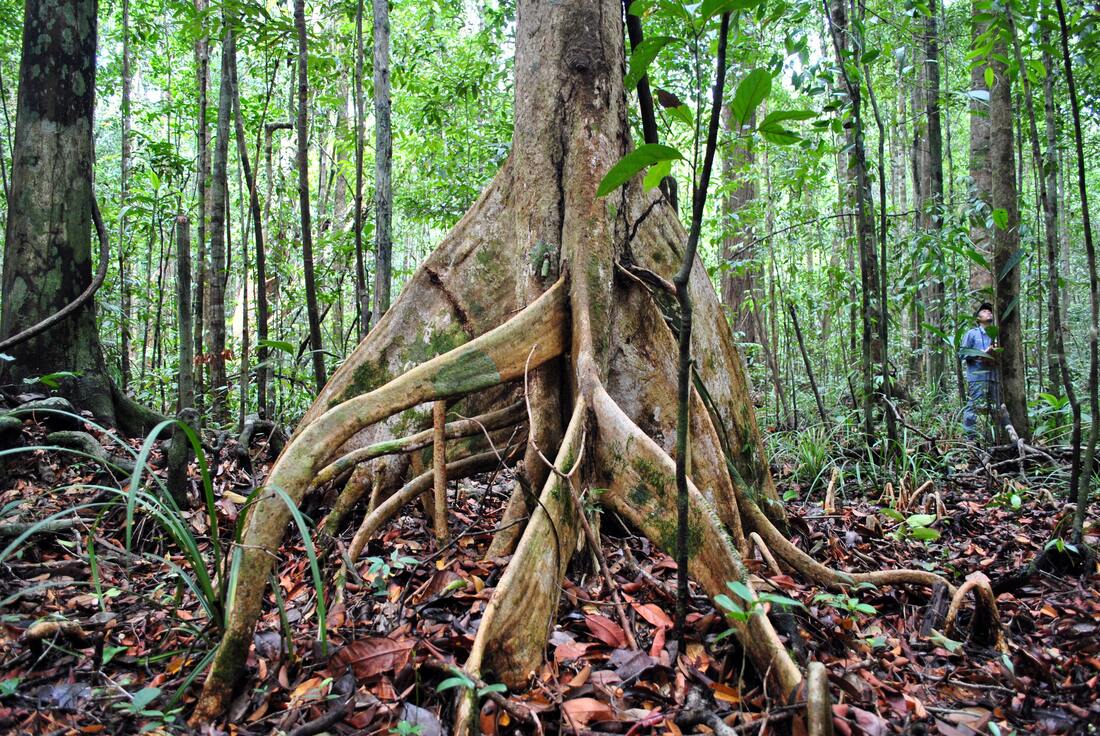
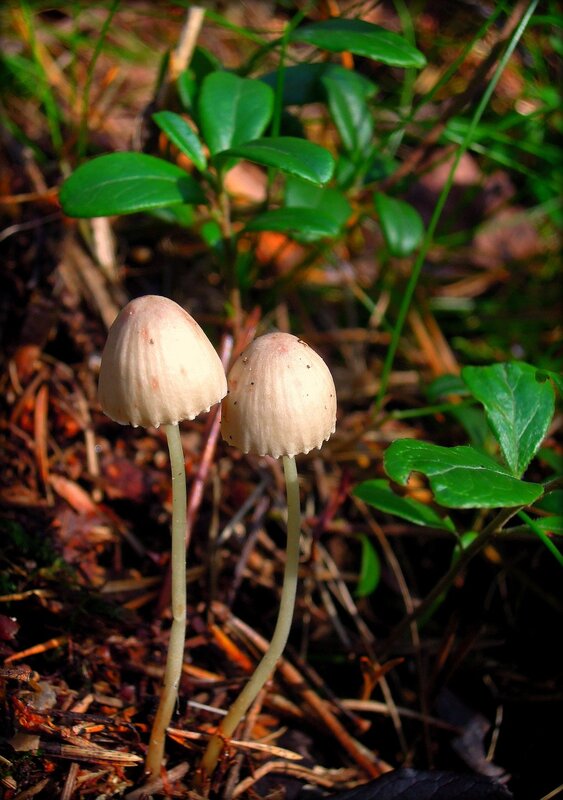
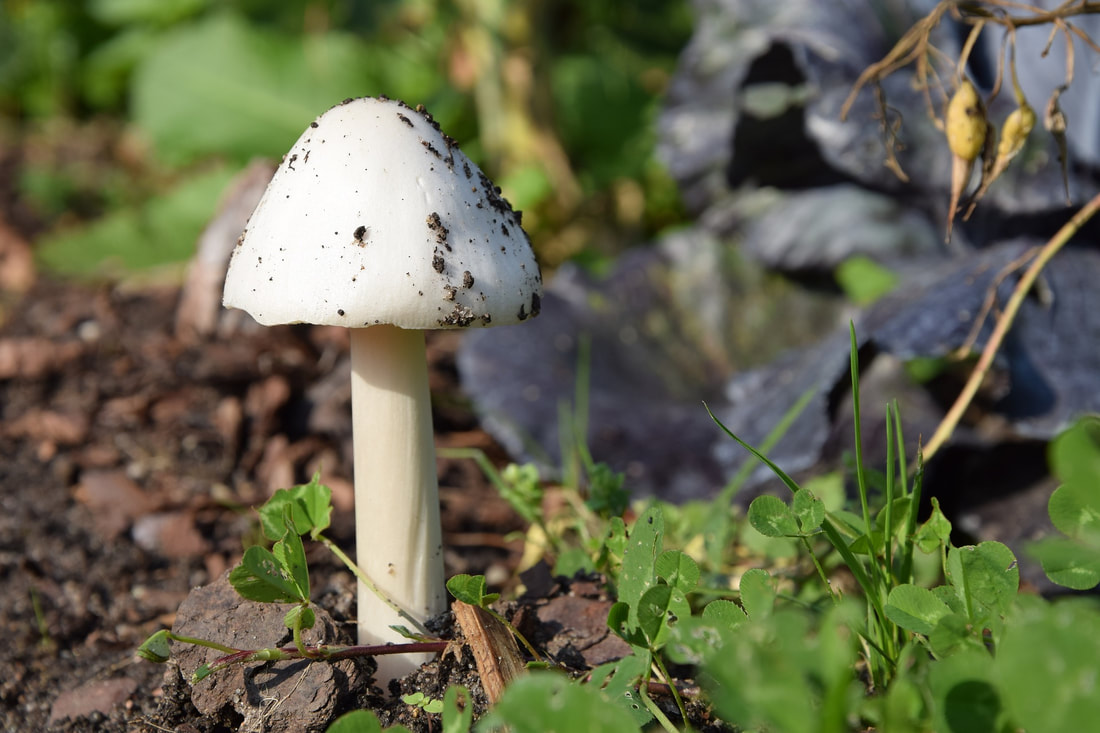
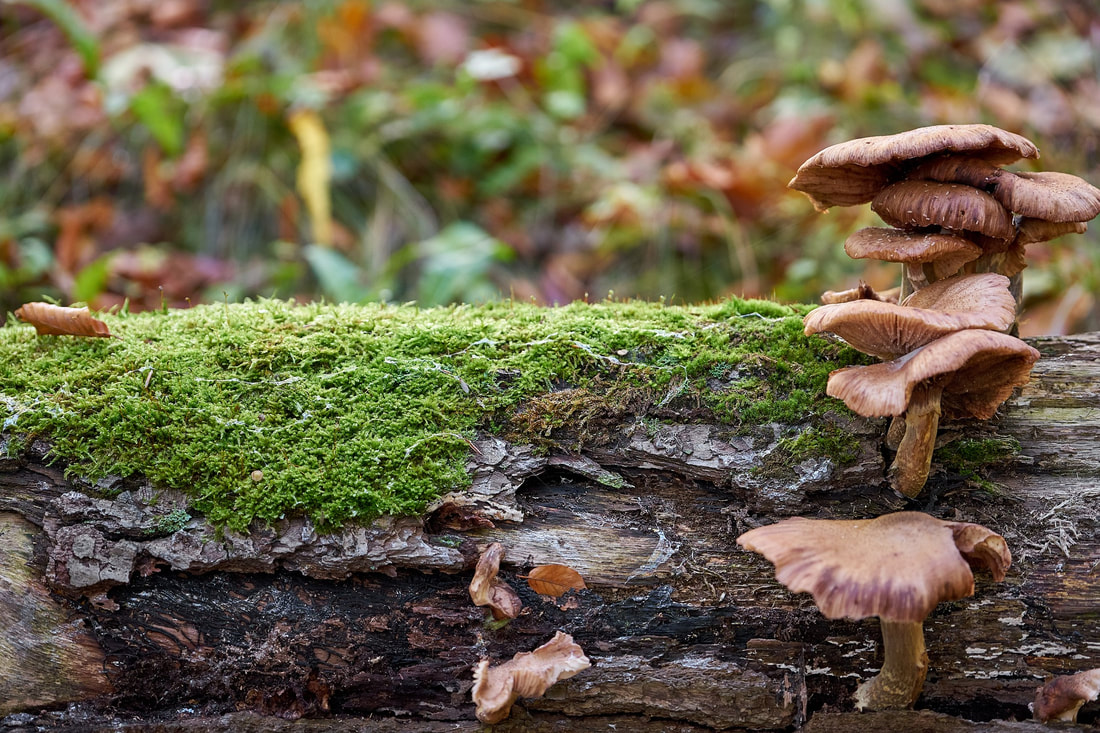
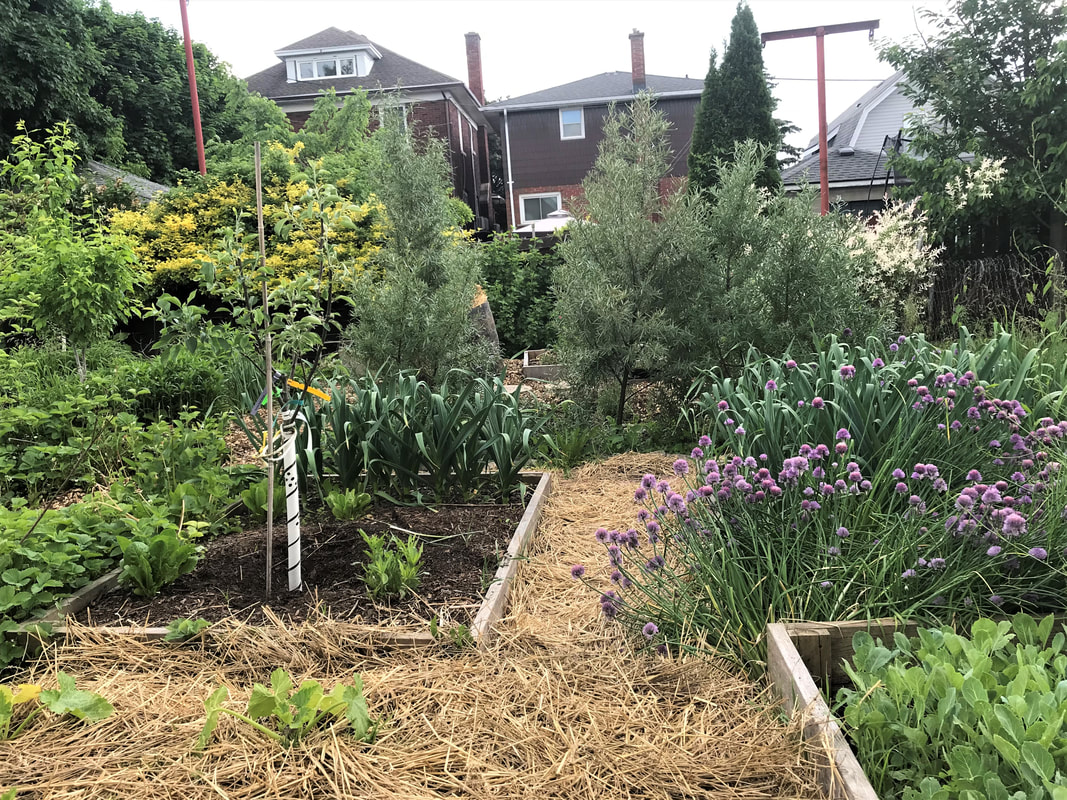
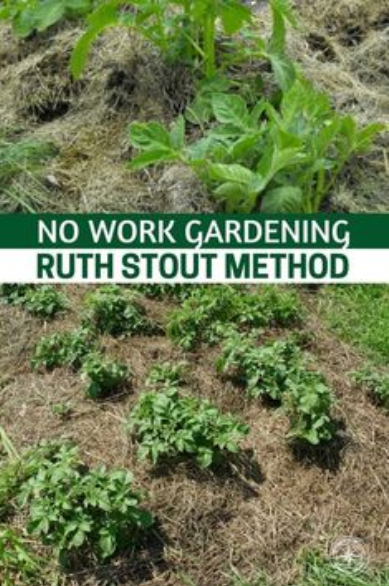
 RSS Feed
RSS Feed